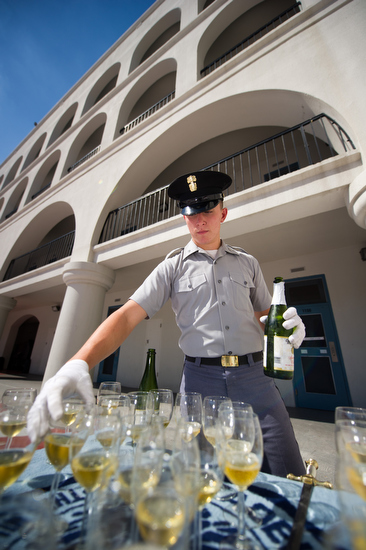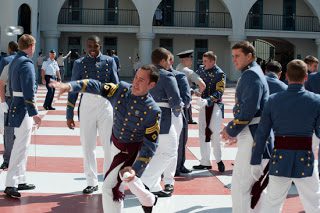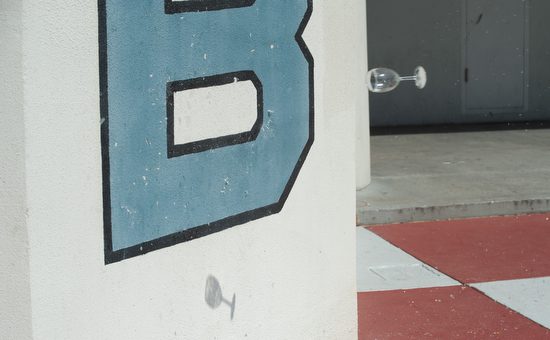Exposure
When you look from photo to photo is there a consistency in the exposure? Amateur photographers often have inconsistent exposure values.
Skin Tones
When you look at the subjects does the skin tone look the right color and exposure? How often are you seeing photos that were shot under fluorescent lights having a green tint to the skin tones. If they have good skin tones on the main subject but the background is green this might be due to using their on camera flash.
Another color shift in skin tones is orange from shooting under tungsten lights. Again if they used their on camera flash the skin tone might look OK and the background is orange.
If the photos are outside and the subjects are under trees, is the skin tone natural or green cast. The leaves on the trees are filtering the light and giving it a green tinge.
Where does your eye go first?
When you look at the photo quickly, where do you look first? Is it at the subject or is there something distracting in the background or off to the side. Many photographers are just not able to understand how the photograph is about front to back and not just the subject. Good composition will have your eye going first to the subject and then if they do a great job it will want to wonder around at all the subtle complementary areas that give more context to the photograph.
Light value on faces
Can you easily see the people’s faces in the photos? It is much easier to just point a camera and shoot existing light. Some photographers will even talk about how it makes it real. Great photographers can shoot using often just available light, but the light on the face has to be right.
 |
| Here it is much easier to see the Fencer’s face due to the style of helmet used here. |
 |
| While normally it is difficult to see a fencer’s face, I chose to make it show up by lighting them in a special way. |
 |
| Can you see how the face helps bring more life to the photo? |
When you are trying to sell something you need to be sure the faces are the best they can be and looking natural as possible. Skilled photographers know how to introduce light on faces so it looks natural, but most important the person’s face is not in a shadow and difficult to see.
Catchlights in the eyes
Often the difference in a good and great portrait is just a catchlight. A catchlight is a photographic term used to describe light reflected in the subject’s eyes. The lack of a catchlight, even in an animal’s picture, can make the subject seem comatose.
 |
| Catch light in action photos is just as appealing as in a portrait. |
Without a catch light you can look a little more sinister.
For the most part a catchlight will add more life to the person than without it. Not having a catchlight can help communicate as well. The point isn’t they need to be in every photo, but you need to be aware if you never see them in the photographers work.
Series
When the photographer shows you some photos do you see a series? You really need to have overall, medium and some closeup shots sometimes for visual storytelling. Your designers want to have some graphics for a background or things to compliment the layout of the webpage, printed piece or to use in a series in a multimedia package for the web.
 |
| Citadel Cadet prepares the Sparkling Cider for the seniors who are now getting their rings. |
 |
| I chose to add a little variety shot here to show it waiting for the seniors. |
 |
| The seniors all run in under the sword arch after getting their rings into the quad. |
 |
| All the seniors grab a glass and toast their success of making it this far at The Citadel. |
 |
| After toasting they all toss their glasses at their company’s letter. Here they are all in Bravo and smash the glasses on the B. |
 |
| I just like how I caught the glass just before being smashed. |
 |
| Without the other photos this doesn’t make sense, but in the series it helps to tell the story. |
Variety
Do all the photos look like the photographer took them from the same perspective? It is amazing how many photographers shoot everything at their standing height or even a similar distance to the subject. They may use their zoom lens to get closer, but they never get close to the subject.
 |
| Giving out door prizes at a college alumni event. |
You should feel like your photographer has some visual surprises and give you some safe as well as some on the edge compositions.
Focus and sharpness
I hate to even have to mention this, but many photographers just do not have razor sharp photos. This does not mean that everything is in focus, but rather whatever place that is suppose to be in focus is and is extremely sharp. Many photographers have camera shake and the photos just are not tack sharp.
Moments
 |
| Family enjoys working out at the gym together. |
You will find many technically proficient photographers who meet most everything I have mentioned up to now and still after looking at the photo you are not moved emotionally. Great storytellers will have moments that bring joy to your heart or maybe even sadness.
What will be apparent is that you felt something when looking at the photos.
The photo makes you ask questions
If your photographer does a great job you will want to know more about the photos. However, the photographer should be waiting for you to ask questions more than jumping in to tell you everything. The photos should for the most part do the communicating.















